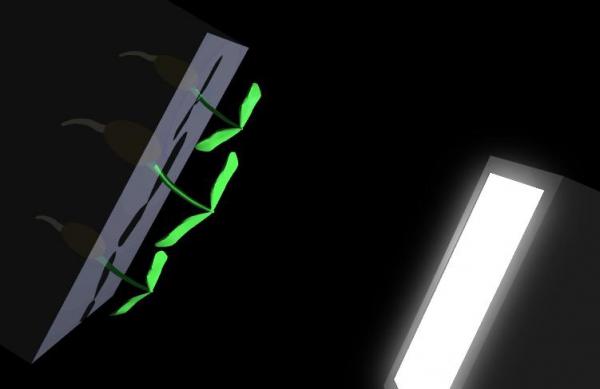BY LETTER
Phototropic Seeds
Science > Biology > Botany
Technology > Technology Type or Material > Gengineering
Technology > Technology Type or Material > Organic/Biotech
Technology > Technology Type or Material > Gengineering
Technology > Technology Type or Material > Organic/Biotech
Plant seeds that orient themselves in microgravity with respect to a light source | |
 Image from Steve Bowers | |
| The shoots of phototropic seeds display positive phototropism; the roots display negative phototropism. | |
The seeds of plants that evolved on Gaian-type worlds must correctly orient themselves so that they send their roots down into soil, or other anchorage, and leaves up to capture light. On planets, moons, and in rotating space habitats, naturally evolved plant seeds orient themselves with gravity-sensitive structures, which allow them to detect which way is up and down. This sense doesn't detect gravity itself, but is instead based upon the acceleration it causes. The sense therefore works equally well in rotating habitats and accelerating spacecraft.
In free fall, seeds must orient themselves using other cues from their environment since they do not have any guidance from acceleration. The most widely adopted method is phototropism. Phototropic seeds extrude light and chemical-sensitive cellular filaments in all directions, and the seeds send out leaf-shoots and roots according to received stimuli.
The seeds of many free fall plants sprout only when specific conditions have been met. Some seeds must be deliberately planted in ponic-matrices*; others drift freely, accreting dust and detritus using adhesive hairs or a sticky seedcoat; still others must pass through the digestive tract of a biont and be deposited inside a mass of fecal material before they will sprout.
The first plants gengineered for free fall date from the early 2nd Century. A perennial strain of chia (Salvia hispanica,) that was named Salvia hispanica gyncloe which has phototropic seeds, bears a nucleotide-encoded patent date of 2187 CE (218 AT). Gengineered chia of this kind remained an important crop during the Dark Ages, and is a staple food into the current era.
*A ponic-matrix is any medium or structure used for the growth of plants. Examples include aeroponic and hydroponic scaffolds, gelponic medium, and soils or garden paste.
Related Articles
Appears in Topics
Development Notes
Text by Johnny Yesterday
Initially published on 23 November 2010.
Initially published on 23 November 2010.






